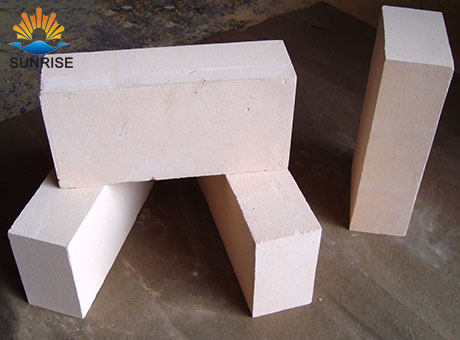
Code of practice for refractory brickwork
Today's refractory bricks are popular with customers because of their special properties, so they are widely used in millions of homes. However, because the performance is different from other bricks, there are also special aspects to pay attention to when building. Then follow our refractory brick manufacturers to find out.
I. Refractory bricks are required to be filled with mortar, and the width of the bricks shall comply with the design requirements of the drawings. The cracks between the refractory bricks not only provide a channel for the infiltration and erosion of the high-temperature molten slag in the operating state, but this slag erosion itself also promotes the continuous increase of the brick gaps. Both of these effects increase the surface of the slag in contact with the side of the refractory brick, and cause the refractory brick to suffer excessive stress during each contraction and expansion cycle caused by heat. The slag has a corrosive effect on the furnace brick not only in the radial direction but also in the circumferential direction of the refractory brick. Especially when there is a circumferential crack on the side of the refractory brick, the circumferential erosion speed is faster, which makes the surface of the refractory brick lumpy. Therefore, the circumferential cracks of refractory bricks have a greater impact on the life of refractory bricks than radial cracks.
In actual masonry, the principle of refractory brick masonry should be met to meet the industry masonry requirements of refractory materials. When laying refractory bricks, the brick joints should be full, the mortar should be squeezed out of the joints, empty joints are not allowed, and mortar cannot be poured into the gray joints. The fullness of the mortar should be greater than 95 ﹪.
2. Each refractory brick must be beaten with a wooden hammer or rubber hammer after being placed in order to squeeze out more than fire mud. It is necessary to ensure that the brick seam and the shell are completely tight. The refractory bricks should be in surface contact and firmly bonded. When hitting refractory bricks, it is necessary to prevent improper knocking or squeezing to damage the refractory bricks or damage to the fire mud which starts to solidify. 1. Silicon brick masonry is 12 ~ 13mm; 2. Magnesia refractory brick masonry is 10 ~ 14mm. 3. Clay brick masonry is 5 ~ 6mm; / 4. High alumina refractory brick masonry is 7 ~ 8mm; 5. Corundum refractory brick masonry is 9 ~ 10mm; 6. Light sticky refractory brick masonry is 5 ~ 6mm ;
3.Before the fire mud of the brick joint is not completely hardened, the excess fire mud should be scraped off. If the fire mud needs to be filled in some places, use a scraper to plug the new fire mud, that is, the masonry joint. When the masonry is built to a height of 0.5m, it must be jointed once, and then the masonry can be built upwards. The joint must be smooth. When the special-shaped refractory bricks of the calcining room are built, no more than four layers of masonry should be carefully jointed, and thick mud should be applied during jointing to ensure the tightness of the masonry.
If you are interested in our fused azs bricks, or need other types of refractory materials, please contact our Tianyang Refractory Group, we will definitely provide you with the best quality refractory materials and the most reasonable quotation.
Inquiry
For more information on any of our products please get in touch using the form below. One of our sales team will respond to your enquiry as soon as possible.

Copyright © 2014 Zhengzhou Sunrise Refractory Co., Ltd. 豫ICP备13002126号























